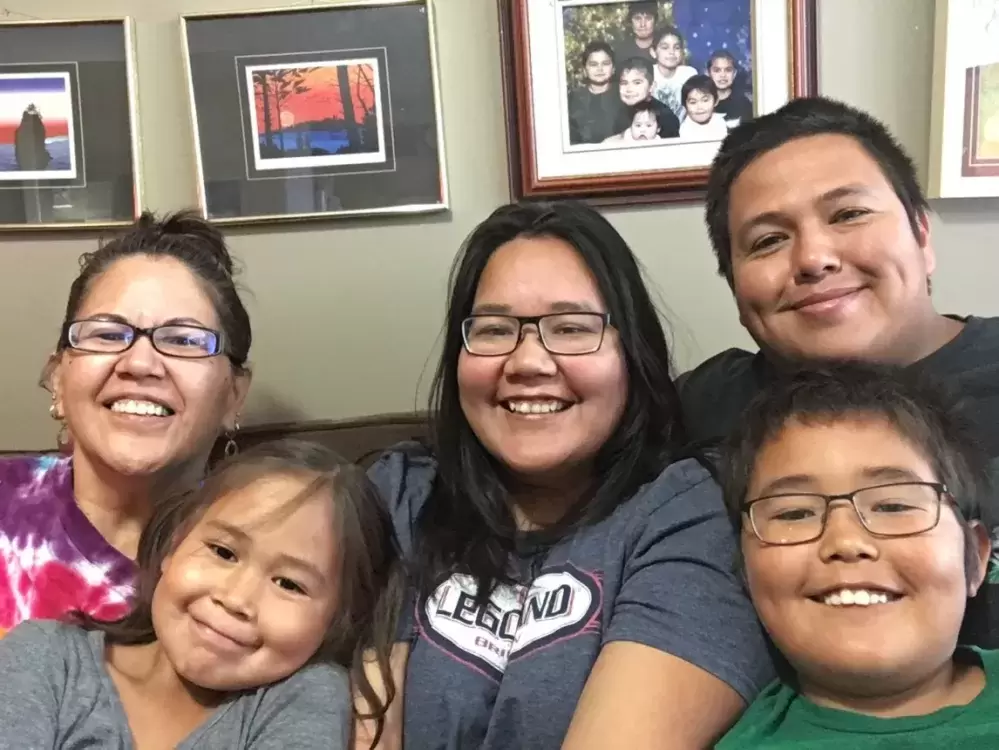Although the list of services offered under the First Nations Health Authority has grown in recent years, people in Nuu-chah-nulth communities who were once eligible for basic health-care expenses are going without supports because they can’t obtain coverage.
Those who work in the community health field say the complaints are heard all too often — particularly among elders — frustrating efforts to improve access to programs and services.
Nora Martin has been a Tla-o-qui-aht First Nation community health liaison for more than 40 years.
“I believe it’s very common,” she said of obstacles encountered. “Over time, I’ve really seen big changes in health-care delivery.”
Those changes haven’t necessarily been for the better, contrary to hopes that health care might improve with creation of the First Nations Health Authority (FNHA) and transfer of health programs and services from the federal government. Access to pharmaceuticals, optical and dental services isn’t as straightforward as it was in the past, Martin said.
“I’m aware that a lot of people can’t afford access to health care or buy new glasses,” she said. “And a lot of other people can’t pay that kind of money. They’re going without. They don’t have any glasses. At one time, Health Canada covered everything. We didn’t have any problems.”
Responsibility for First Nations health care benefits has changed within the last six years, but FNHA maintains that the same benefits remain available and that coverage has been increased in some cases.
The first of its kind in Canada, FNHA was set up expressly to address “unacceptable and unsustainable” disparities between the health outcomes of Indigenous and non-Indigenous people in the province. The framework emerged from the Tripartite First Nations Health Plan, part of the Transformative Change Accord a dozen years ago. Transfer of programs and services wasn’t completed until 2013.
Martin knows of elders who refuse health care service because they’re worried about their ability to pay bills. Complaints come from elders having to bear the cost of renewing eyewear and diabetic medicine prescriptions. People are turning to relatives or the community for help in paying the costs of ambulance bills, emergency room visits, dental work and hearing aids. One elder had three ambulance bills referred to debt collection.
Prior to the FNHA era, health care costs were covered by Health Canada without issue through the Non-Insured Health Benefits program.
Brenda Dennis from Tla-o-qui-aht First Nation was diagnosed eight years ago with fibromyalgia, a chronic and potentially debilitating condition that causes pain all over the body. A medication side effect has left her unable to work at age 59. While some of her medications were covered, her only income was a disability benefit, leaving her unable to afford the others.
“I had to borrow from my kids,” she said, explaining the bill was $78 a week. “It didn’t even work.”
More recently, surgery for a detached retina was covered while prescribed post-operative eye drops were not. Coverage was approved only through the compassionate intervention of one worker, she said. When her retina again detached, she had to borrow money again for the drops. She has friends suffering clouded vision due to cataracts — not an uncommon affliction among seniors — who are reluctant to undergo corrective surgery due to costs.
“It’s really sad because it should be free for elders,” Dennis said.
She can’t afford two creams prescribed to manage her fibromyalgia. One of them costs $56.
“I phoned and can’t afford it. It’s still sitting at the pharmacy. I’m just dealing with the pain. I just have to deal with it. I have no choice.”
Dennis hears similar complaints from elders whom she knows, though difficulties are not limited to older people.
The mother of one young man who encountered bureaucratic obstacles said the problems are common. An ambulance bill from a motor vehicle accident was referred to debt collection after a mix-up involving his native status and eligibility for coverage. She went to bat for her son to correct the matter, but seven months of red-tape runaround left her feeling angry and upset.
“It was a series of situations, it wasn’t just one instance,” she said, preferring to remain anonymous since she works in health-care services.
The experience gave her the impression that the shortcomings need to be addressed since they undermine efforts to reduce barriers to health care.
“The whole idea was to improve health care when it’s going in the opposite direction.”
At least part of the solution may lie with better advocacy, education and communication, she added.
Complaints from people attempting to navigate the system are not uncommon. In a public health system, criteria for coverage and exclusions can be a quagmire for some. Certain costs are covered, others are not.
“We can’t comment on individual cases,” said Davis McKenzie, FNHA’s director of communications and public relations. “What we want people to do is call so that we can help.”
The only change in the benefit plan since FNHA took over is “steady but incremental increases in benefits,” he added.
FNHA’s website provides detailed information for benefits and common areas of coverage such as vision and dental care. Toll-free numbers are available for further assistance. A navigator service is set up to assist clients. NTC employs nurse navigators for that same purpose.
Community health liaisons can often lend assistance in connecting people with services, but covering costs is a separate matter, Martin said.
“People call here asking us to pay, but we don’t have any money for that,” she said.







